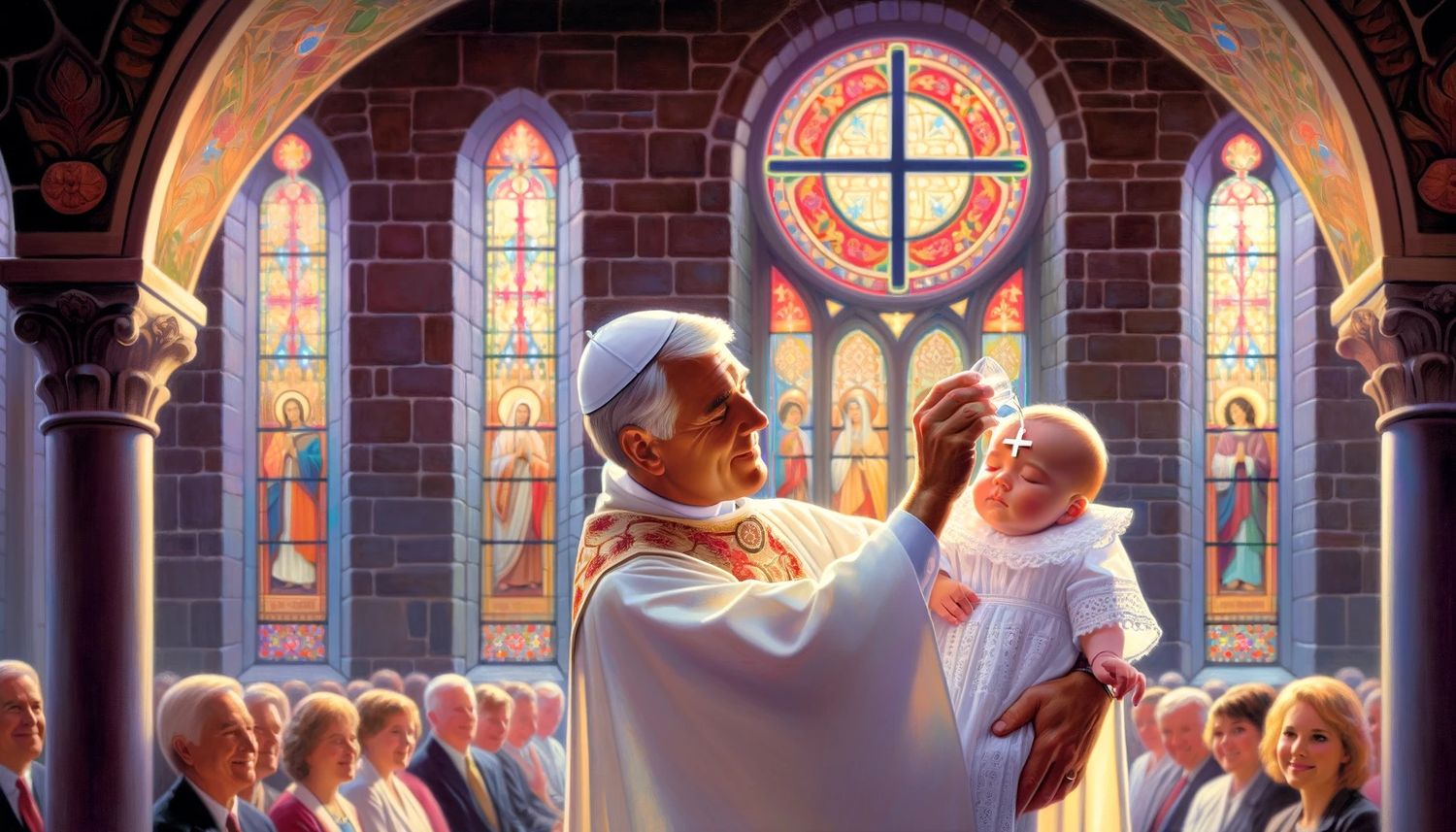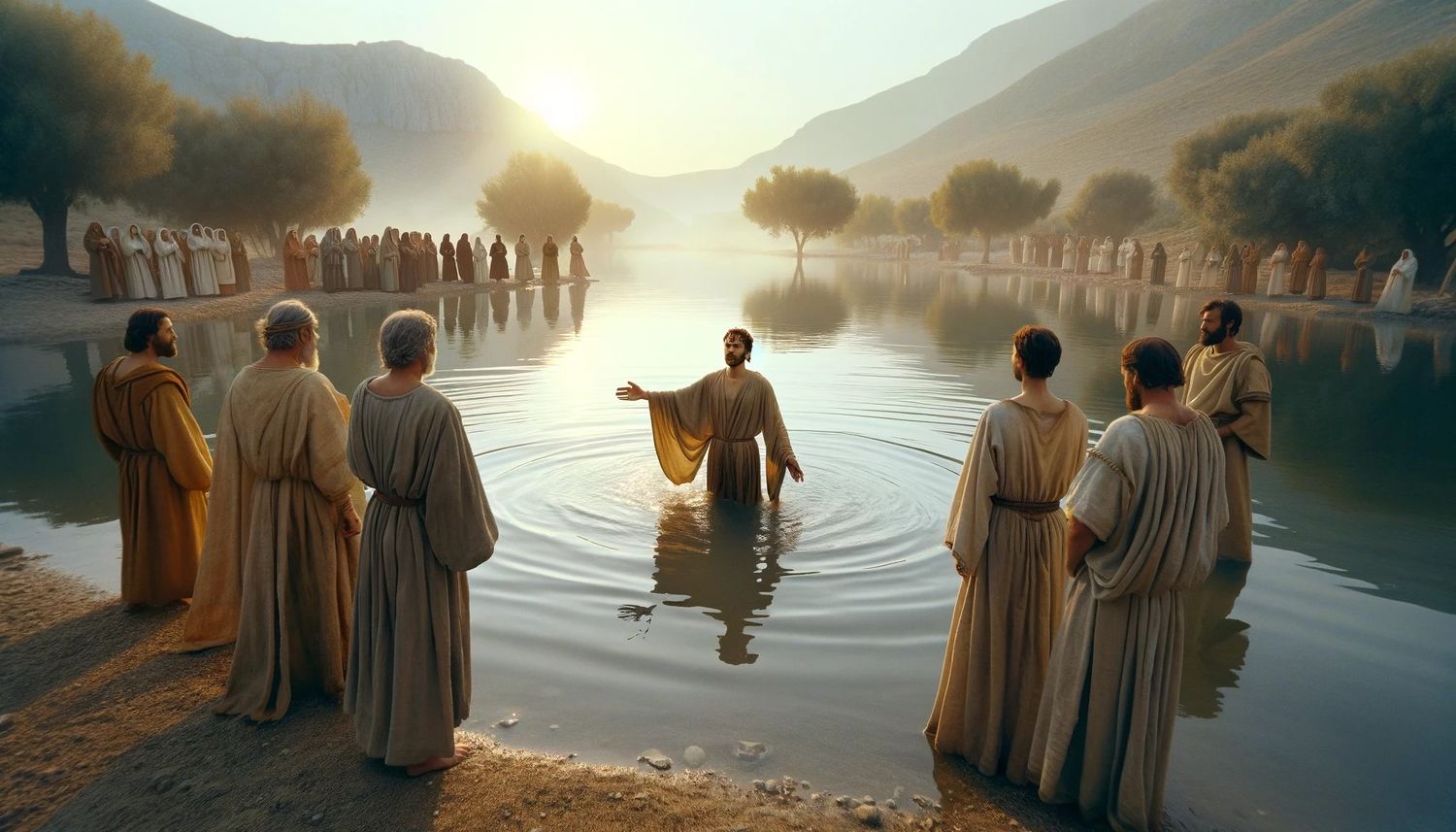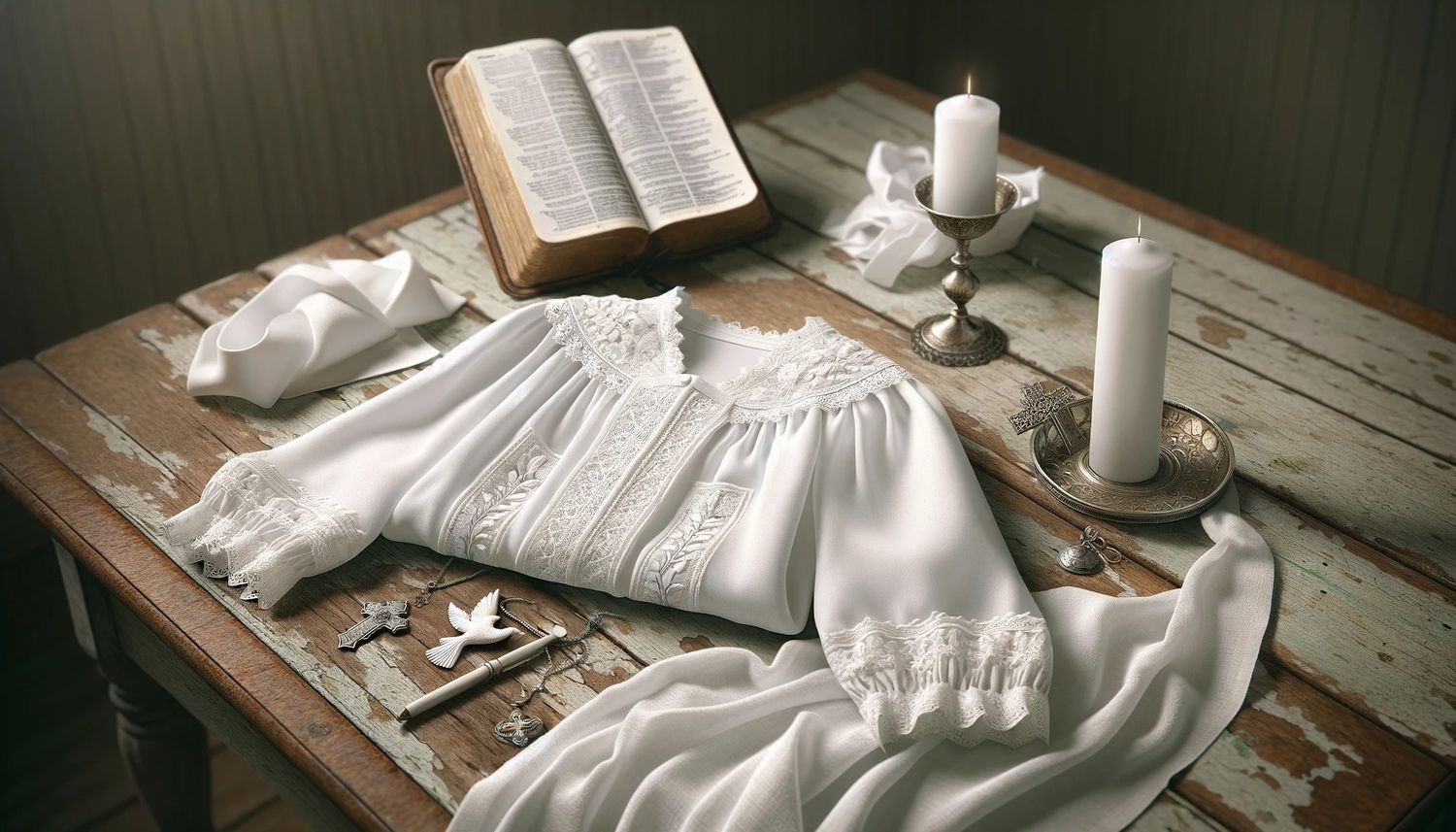Home>Theology and Spirituality>Why Is A Candle Used In Baptism


Theology and Spirituality
Why Is A Candle Used In Baptism
Published: February 29, 2024
Jason DeRose, Managing Editor at Christian.net, uses his expertise in religion and journalism to deepen understanding of faith's societal impacts. His editorial leadership, coupled with a strong academic background, enriches the platform’s diverse content, earning him recognition in both journalism and religious circles.
Discover the significance of using a candle in baptism and its symbolism in theology and spirituality. Learn about the spiritual meaning and tradition behind this sacred ritual.
(Many of the links in this article redirect to a specific reviewed product. Your purchase of these products through affiliate links helps to generate commission for Christian.net, at no extra cost. Learn more)
Table of Contents
The Symbolism of Light in Baptism
The use of a candle in the sacrament of baptism holds deep symbolic significance within the Christian faith. The candle represents the light of Christ, illuminating the path of the newly baptized individual as they begin their journey of faith. Just as a candle dispels darkness, the light of Christ symbolizes the dispelling of spiritual darkness and the arrival of divine illumination in the life of the baptized person.
The lighting of the candle also signifies the presence of the Holy Spirit, who is often depicted as a flame or a source of light in Christian tradition. This act serves as a visual representation of the spiritual transformation that occurs during baptism, as the individual is cleansed of sin and welcomed into the community of believers.
Furthermore, the candle serves as a reminder of the baptismal vows and the commitment to live a life guided by the teachings of Jesus Christ. Just as a flame requires nurturing and protection to stay alight, the newly baptized person is called to nurture and protect their faith, allowing it to shine brightly in the world.
In essence, the symbolism of light in baptism encapsulates the themes of spiritual enlightenment, the presence of the Holy Spirit, and the ongoing commitment to live a life rooted in faith and love.
Read more: Why Is The Advent Candle Pink
The Historical Use of Candles in Baptism
-
Early Christian Practices: The use of candles in baptism can be traced back to the early centuries of Christianity. In the early Church, the sacrament of baptism was often conducted during the Easter Vigil, a time of great significance for Christians. Candles were lit as a part of the ceremony, symbolizing the light of Christ entering the life of the newly baptized individual.
-
Symbolism in the Middle Ages: During the Middle Ages, the use of candles in baptism became more formalized and ritualistic. The candle was seen as a representation of the spiritual enlightenment that comes with baptism, and it was often accompanied by specific prayers and blessings invoking the presence of the Holy Spirit.
-
Liturgical Development: As liturgical practices evolved, the use of candles in baptism became a standard part of the ceremony. The lighting of the baptismal candle was seen as a pivotal moment, signifying the reception of the light of Christ and the beginning of a new life in the faith.
-
Artistic Depictions: Throughout history, artistic representations of baptism often included the imagery of a candle, further emphasizing its importance in the sacramental rite. These depictions served to reinforce the symbolic significance of the candle in the public consciousness and underscored its enduring role in the baptismal tradition.
-
Continued Tradition: Today, the historical use of candles in baptism continues to be upheld in many Christian denominations. The rich historical legacy of the candle in baptism serves as a reminder of the enduring symbolism and spiritual significance associated with this ancient ritual.
The Spiritual Significance of Candles in the Baptismal Ceremony
-
Symbol of Christ's Light: The use of a candle in the baptismal ceremony carries profound spiritual significance. It symbolizes the light of Christ, representing the presence of Jesus as the guiding force in the life of the baptized individual. Just as a candle illuminates the darkness, the light of Christ dispels spiritual obscurity and brings clarity and hope to the newly baptized.
-
Purification and Enlightenment: The act of lighting the candle during baptism signifies the spiritual purification and enlightenment that occurs through the sacrament. The individual is cleansed of sin and welcomed into the community of believers, embarking on a journey of faith illuminated by the divine light of Christ.
-
Presence of the Holy Spirit: The candle also serves as a tangible representation of the presence of the Holy Spirit. In Christian tradition, the Holy Spirit is often symbolized by fire or light, signifying divine presence and guidance. The lighting of the baptismal candle acknowledges the indwelling of the Holy Spirit in the life of the baptized person, empowering them to live a life rooted in faith and love.
-
Commitment to Faith: The baptismal candle serves as a reminder of the commitment to live a life guided by the teachings of Jesus Christ. Just as a flame requires nurturing and protection to stay alight, the newly baptized person is called to nurture and protect their faith, allowing it to shine brightly in the world and serve as a beacon of hope and love.
-
Continued Spiritual Journey: The candle symbolizes the beginning of a lifelong spiritual journey for the baptized individual. It represents the ongoing process of spiritual growth, transformation, and the pursuit of a deeper relationship with God. The light of the baptismal candle serves as a constant reminder of the divine presence and the call to live as a reflection of Christ's light in the world.
In essence, the spiritual significance of the baptismal candle encompasses themes of divine illumination, spiritual purification, the presence of the Holy Spirit, and the enduring commitment to live a life rooted in faith and love.
The Role of the Godparents in the Lighting of the Baptismal Candle
-
Spiritual Responsibility: The godparents play a pivotal role in the baptismal ceremony, and their involvement in the lighting of the baptismal candle holds significant spiritual importance. As witnesses to the baptism, the godparents are entrusted with the task of upholding the faith and guiding the spiritual development of the newly baptized individual. By actively participating in the lighting of the baptismal candle, the godparents symbolize their commitment to supporting the spiritual journey of the baptized person and nurturing the flame of faith within them.
-
Symbolic Representation: The act of the godparents lighting the baptismal candle signifies their role as mentors and guides in the faith of the newly baptized. It serves as a visual representation of their responsibility to help kindle and safeguard the light of Christ within the individual, ensuring that it continues to shine brightly throughout their life. This symbolic gesture underscores the godparents' pledge to provide spiritual guidance, encouragement, and unwavering support as the baptized person grows in their faith.
-
Continuity of Faith: Through the participation in the lighting of the baptismal candle, the godparents affirm their commitment to upholding the traditions and teachings of the Christian faith. They become instrumental in passing down the spiritual heritage and values of the faith to the next generation, ensuring the continuity of the Christian journey for the newly baptized. The godparents' involvement in this ritual reinforces the interconnectedness of the faith community and the shared responsibility of nurturing and preserving the light of Christ in each individual.
-
Guardians of Faith: In taking part in the lighting of the baptismal candle, the godparents embrace their role as guardians of the baptized person's spiritual well-being. They pledge to provide guidance, encouragement, and unwavering support as the individual navigates their faith journey. The act of lighting the baptismal candle serves as a visible expression of the godparents' commitment to fostering a strong and enduring foundation of faith in the life of the newly baptized, ensuring that the light of Christ continues to shine brightly within them.
-
Symbol of Unity: The godparents' involvement in the lighting of the baptismal candle also symbolizes the unity of the faith community in supporting and nurturing the newly baptized individual. It signifies that the journey of faith is not undertaken alone, but within the embrace of a loving and supportive spiritual family. The godparents, by participating in this significant ritual, affirm their role as integral members of the broader Christian community, dedicated to fostering the spiritual growth and well-being of the baptized person.
In essence, the role of the godparents in the lighting of the baptismal candle embodies their spiritual responsibility, symbolic representation as mentors, commitment to the continuity of faith, guardianship of faith, and the symbol of unity within the faith community.
The Continued Importance of Candles in Modern Baptismal Practices
-
Symbolic Continuity: In contemporary baptismal practices, the use of candles continues to hold profound significance. The symbolism of light, representing the presence of Christ and the guidance of the Holy Spirit, remains a central aspect of the baptismal ceremony. Despite the evolution of religious customs and traditions, the enduring symbolism of the baptismal candle underscores its continued importance in modern Christian faith communities.
-
Spiritual Connection to Tradition: The retention of candles in modern baptismal practices serves as a link to the rich historical and spiritual traditions of the Christian faith. By incorporating the use of candles, contemporary baptismal ceremonies maintain a connection to the early Christian practices and the enduring symbolism associated with the light of Christ. This connection to tradition reinforces the spiritual continuity and time-honored significance of the baptismal candle in modern religious observance.
-
Visual Representation of Faith: The visual impact of the baptismal candle in modern ceremonies provides a tangible representation of the spiritual transformation and commitment to faith. The act of lighting the candle serves as a powerful visual symbol of the divine light entering the life of the baptized individual, signifying their initiation into the community of believers and their dedication to living a life guided by the teachings of Jesus Christ. This visual representation reinforces the spiritual depth and significance of the baptismal candle in contemporary religious practices.
-
Community Involvement and Support: The continued use of candles in modern baptismal practices also fosters a sense of community involvement and support. The participation of the faith community in witnessing the lighting of the baptismal candle underscores the shared responsibility of nurturing and upholding the faith of the newly baptized individual. This communal involvement serves to strengthen the bonds within the faith community and reinforces the collective commitment to guiding and supporting individuals on their spiritual journey.
-
Symbol of Hope and Renewal: In the modern context, the baptismal candle also serves as a symbol of hope and renewal. As the newly baptized individual receives the light of Christ, it represents a fresh beginning and a spiritual rebirth. The symbolism of the candle aligns with the universal human desire for spiritual renewal and the pursuit of a life illuminated by faith, love, and divine guidance. This enduring symbolism resonates with individuals seeking spiritual meaning and purpose in the contemporary world.
In essence, the continued importance of candles in modern baptismal practices reflects the symbolic continuity, spiritual connection to tradition, visual representation of faith, community involvement and support, and the symbol of hope and renewal within the Christian faith.















